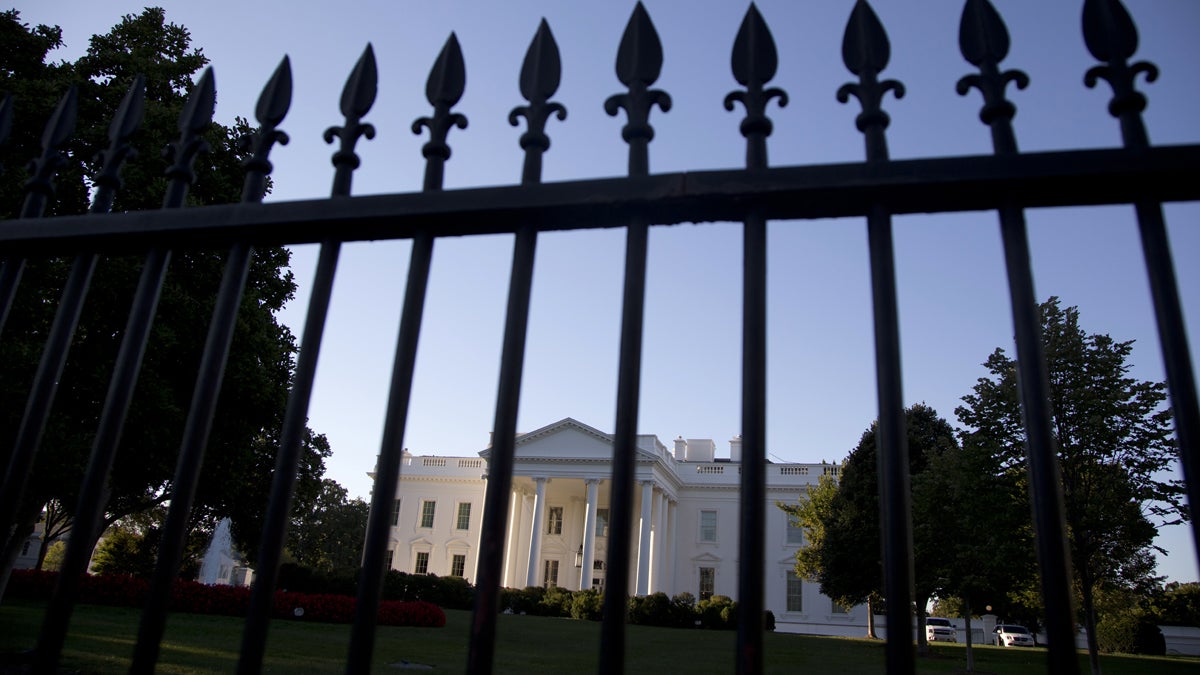Sick of the 2016 campaign? Look back at past presidential runs instead

The White House is shown from Pennsylvania Avenue in Washington
Is this the best time to explore how we elect presidents? That’s what the National Constitution Center is doing in “Headed to the White House.” By the time the exhibit closes on Nov. 13, some — perhaps all — of us may be headed for the border.
Five months out, Americans may be fed up with this election, but that doesn’t mean we’re well fed. If information is intellectual food, this cycle has been all Froot Loops and strychnine. Does anyone still have an appetite to learn about the process? Could anyone still care?
Present company excepted
Lots of people did on Memorial Day, at least, perhaps due to free admission for the holiday, but maybe because the ardently non-partisan Constitution Center is a refreshingly civil forum in which to consider American democracy and the political process. Which explains why “Headed to the White House” includes not a single thing about the current campaign. No toxic tweets. No unencrypted e-mails. No name-calling or fistfights. When I learned at the door that time had effectively stopped in 2012, I fled over the threshold like an asylum-seeker at a friendly border.
Free from the fear and loathing that is 2016 politics, visitors revel in long-settled political struggles. Simpler times of whistle-stop tours and campaign souvenirs, from the silly (a cologne bottle shaped like James Garfield’s head and a silk stocking embellished with “I like Ike”) to the ironic (George Wallace salt-and-pepper shakers). Even the whole hanging-chad fiasco began to seem a quaint reminder of — oh, on second thought, scratch that. Still too soon.
Erasing generational divides
It was encouraging to see people of all ages listen to Franklin Delano Roosevelt’s campaign song “Happy Days are Here Again,” watch Barbara Jordan, the first African-American congresswoman elected from the deep south, deliver the keynote at the 1976 Democratic National Convention, and find that the 1840 election was the first to employ tools such as fundraising, campaign slogans, and stump speeches. Prior to that, active campaigning by candidates was thought dangerous, corrupt, and unseemly. (Another thing the founders got right.)
Multimedia displays and interactive activities enable visitors to manage a campaign, deliver a stump speech with a teleprompter, and discover how excluded groups fought for the vote. Individuals can determine their eligibility to vote in different eras. One small boy was overheard confirming that when he turned 35, he could run. Nearby a father watched a time-lapse video map of electoral results since 1789, and told his children that he’d cast his first vote in 1988.
Everybody learns
However long you’ve been voting, you’ll learn a thing or two. Such as: Florida, home of the hanging chad, was the first to hold a primary, in 1904. Soon, everybody was doing it. Thanks again, Florida.
And: Faithless electors, members of the Electoral College who don’t vote for the candidate to whom they’re pledged, have never changed an election outcome. I don’t know how to feel about that.
Or this: In 2012, President Obama and Gov. Mitt Romney together spent more than $16 on every person who voted.
Fact-filled, fun, and free of current baggage, the Constitution Center provides a welcome alternative to hiding under the bed until our long national nightmare ends (begins?) on Nov. 8.
WHYY is your source for fact-based, in-depth journalism and information. As a nonprofit organization, we rely on financial support from readers like you. Please give today.

